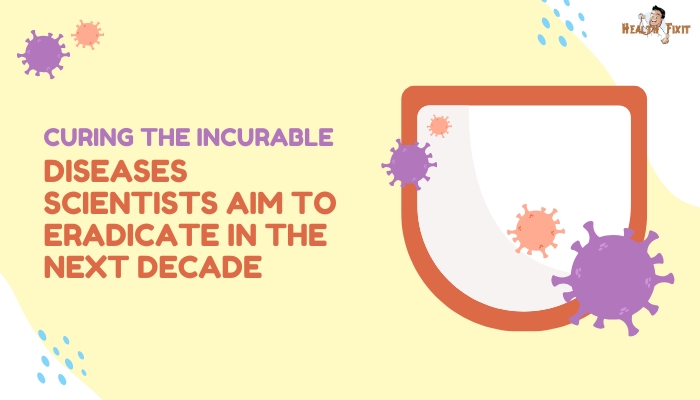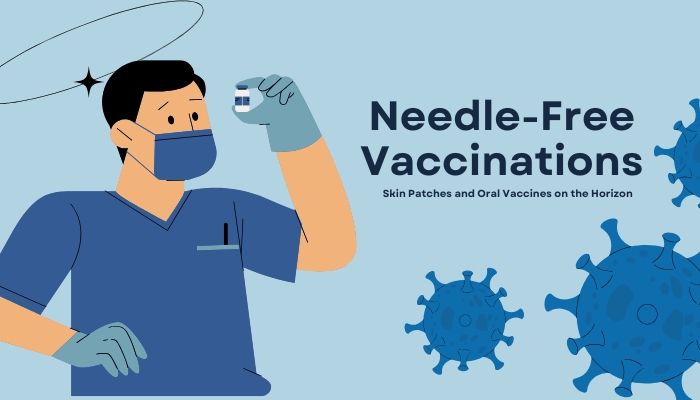Introduction
Medical science continues to advance. Experts believe that some persistent diseases can be significantly reduced or eliminated soon.
Many illnesses once seemed impossible to treat. Today, physicians have effective medicines and promising vaccines. This shift gives hope for conditions that remain widespread.
This article examines major diseases that researchers and public health authorities aim to eradicate or control. It also describes approaches that may lead to lasting success.
Elimination of certain diseases requires consistent research. Scientists must discover treatments that attack pathogens at key stages.
They also need vaccines that prevent future infections. Public health strategies work best when researchers, governments, and communities share data and resources.
This global approach can deliver changes in disease prevention and control. If research continues at its current rate, many diseases could become rare within the next decade.
HIV (Human Immunodeficiency Virus)
HIV affects the immune system. It attacks crucial cells that guard against infections. Researchers aim for vaccines and advanced therapies to reduce new cases. Many scientists want to see HIV incidence drop to very low levels in the near future.
Current Treatments
Antiretroviral therapy (ART) suppresses HIV. It blocks the virus from multiplying. This treatment helps individuals live close to normal lifespans. In many regions, widespread testing has improved early detection. People who test positive start ART quickly. Early therapy helps the immune system avoid serious damage. While ART does not completely remove HIV from the body, it prevents further harm.
Vaccine Prospects
An ideal HIV vaccine could help the body develop protective immune responses. Researchers have created trial vaccines that triggered partial responses. These clinical studies guide new research. Scientists now focus on “broadly neutralizing antibodies” that could target many HIV strains. Work in gene editing also holds promise. Some laboratories study techniques that remove HIV DNA from infected cells. Many experts think that a vaccine may emerge in the next decade. That success, combined with rapid testing and ART, may drive rates of infection down.
Malaria
Malaria spreads through mosquito bites. It causes fever, chills, and organ problems. The parasite responsible for malaria can survive in warmer climates and in regions with standing water. Control measures include mosquito nets and insecticides. Drug therapy is also critical. Many public health groups want to reduce malaria drastically in areas with high infection rates. Recent research offers hope for improved malaria vaccines.
Vaccine Progress
Vaccines help prevent clinical disease in many individuals. One option, known by a short alphanumeric name, has shown moderate success in trials. Investigators improved its design to raise the immune response. They also study genetic strategies to limit parasites in mosquito populations. Researchers hope that distributing a vaccine along with existing control measures will curb many infections. The vaccine may not be perfect, but it reduces illness and deaths.
Gene-Editing Approaches
Some scientists investigate gene-editing tools that alter mosquito populations. This approach changes mosquito genes to make them less able to harbor malaria parasites. Reduced mosquito transmission could, in theory, lower the number of new cases. These methods must be tested for safety in large-scale environments. Experts want to ensure that editing one species does not harm balanced ecosystems. If these trials continue as planned, gene-editing might emerge as an option in the coming years.
Polio (Poliomyelitis)
Polio once caused widespread paralysis worldwide. Decades ago, many children faced permanent disability from polio infection. Vaccines changed that reality. Now, polio circulates in only a few areas. Public health campaigns prioritize immunization. If worldwide vaccination rates stay high, experts believe polio can be fully eradicated.
Next Steps
Both oral and injectable vaccines exist. The oral vaccine contains a weakened form of polio virus. This vaccine can sometimes revert to a form that can spread. The inactivated injectable vaccine, on the other hand, does not carry this risk. Some authorities recommend a mixed strategy. This method ensures broad coverage while reducing the chance of new outbreaks. The final stage of polio eradication involves reaching communities without reliable healthcare. Mobile clinics and local outreach programs help deliver vaccines to remote populations. Polio is close to elimination, and continued vigilance over the next decade may achieve complete control.
Tuberculosis (TB)
TB is caused by a bacterium that usually affects the lungs. TB spreads when infected individuals cough or sneeze. Latent TB often remains hidden without symptoms. People with weak immune systems face an increased risk of active TB disease. Treatment involves multiple antibiotics over several months. Some forms of TB have become resistant to standard drugs.
Scientists hope to discover new medication regimens that shorten treatment time. They also want to develop more effective vaccines. The Bacillus Calmette–Guérin (BCG) vaccine, in use for many decades, provides partial protection. Recent clinical trials for next-generation TB vaccines suggest that improved options may become available. Researchers also test therapies that boost immune responses to eliminate TB bacteria. If these approaches prove successful, TB incidence may drop sharply.
Hepatitis C
Hepatitis C affects the liver. It spreads through infected blood. A common route of transmission is shared needles among injection drug users. Chronic infection can lead to cirrhosis or liver failure. Interferon-based treatments used to have many side effects. Now, direct-acting antivirals can clear the virus in most patients. These newer medications work quickly and involve fewer side effects.
There is a growing push for widespread testing and early treatment. Some experts think that universal testing could help identify all carriers. Prompt therapy would stop disease progression. This would also reduce spread. A vaccine for Hepatitis C has not been approved. Investigations continue, and a breakthrough vaccine might arrive in the next decade. If combined with direct-acting antivirals, this could make Hepatitis C far less common.
Ebola
Ebola virus causes severe hemorrhagic fever. It spreads through direct contact with blood and bodily fluids. Past outbreaks in parts of Africa revealed the disease’s high fatality rate. Early isolation and supportive treatment help. Vaccines have also been introduced in emergency settings. These vaccines lower infection rates, especially among high-risk healthcare workers and close contacts of known cases.
Scientists hope to develop expanded vaccination efforts and quick diagnostic tests. Early diagnosis can isolate patients, preventing further spread. Effective vaccine campaigns in past outbreaks protected frontline staff. Newer treatments involve antibodies that prevent the virus from infecting cells. Researchers continue to refine these therapies. They want to make them simpler and safer to store, even in rural clinics. This approach may bring Ebola infections under control before they become major outbreaks.
Lassa Fever
Lassa fever is another hemorrhagic disease. It is usually transmitted by rodents. It can also spread between humans through body fluids. Lassa fever can cause hearing loss and multi-organ problems. Treatment usually involves supportive care. An antiviral drug can reduce complications if given early. However, many communities in affected regions lack reliable diagnostics. Some patients only seek help in advanced stages.
Research groups have started developing vaccine candidates. They also focus on rodent control measures. If vaccines prove effective, they may dramatically reduce outbreaks in West African countries where Lassa fever is endemic. Additional steps include better healthcare infrastructure. Rapid tests for diagnosis may also improve patient outcomes. Analysts think that Lassa fever could be controlled over the next decade with new tools and coordinated efforts.
Guinea Worm Disease
Guinea worm disease occurs when people drink water contaminated with water fleas that carry worm larvae. Over about a year, the worm grows inside the body. It then emerges through the skin, causing pain and disability. Guinea worm disease was once common in certain regions of Africa and Asia. An extensive campaign has lowered case counts to near zero.
Control methods include providing clean drinking water and filtering out water fleas. Community education programs also instruct people to avoid contaminated sources. Inspectors monitor remote villages to identify any new cases. If all active infections are managed, the worm’s life cycle breaks. Guinea worm disease may soon be the second human disease (after smallpox) to be eradicated worldwide.
River Blindness (Onchocerciasis)
River blindness is caused by a parasitic worm. It spreads through blackflies that breed in fast-flowing rivers. Infections can lead to itchy rashes and vision problems. Community-directed treatment with specific medication has lowered infection rates. Programs also involve spraying blackfly breeding sites to reduce their numbers.
Efforts are ongoing to complete elimination in Africa and parts of Latin America. Annual drug treatment kills larvae. Repeated treatment at the community level can clear the parasite from entire regions. If local transmission ends, the disease will eventually vanish. Scientists have also studied additional therapies that might shorten or simplify treatment. Many experts consider river blindness a prime candidate for elimination in the near future.
Leprosy (Hansen’s Disease)
Leprosy is a chronic infection caused by bacteria that affect the skin and nerves. It leads to nerve damage and disability if untreated. Early detection and treatment prevent long-term problems. Multidrug therapy kills the bacteria. It helps patients avoid serious complications. Transmission declines when most infected individuals receive prompt treatment.
Public health organizations have worked on leprosy for years. Many countries have reduced cases sharply. Remaining patients often live in areas with poor medical access. Researchers want to improve diagnostic tests. Faster, simpler detection would ensure earlier therapy. Some scientists also explore vaccine strategies that target the bacteria. With more efficient public health efforts, experts hope that leprosy will continue to decline. It is possible that new cases will drop to very low numbers over the next decade.
Cancer: Targeted Therapies and Immune-Based Treatments
Cancer consists of diseases where cells grow out of control. There are many types with various causes. Some result from inherited genes, others from environmental exposures. Traditional treatments include surgery, chemotherapy, and radiation. These therapies often produce side effects. In recent years, breakthroughs in immunotherapy and targeted drugs have improved survival.
Immunotherapy
Immunotherapy directs the immune system to attack cancer cells. These treatments can be specific. Some use antibodies against molecules that help cancer cells hide. Other approaches, such as cell-based therapy, modify a patient’s own immune cells to recognize tumor antigens. These strategies have extended survival in certain types of cancer. They also avoid some side effects linked to standard chemotherapy. Scientists develop new immunotherapies that broaden their use. In the next decade, certain cancers could become easier to control.
Neurodegenerative Diseases: Alzheimer’s and Parkinson’s
Neurodegenerative disorders, such as Alzheimer’s disease and Parkinson’s disease, remain without definitive cures. However, research focuses on therapies that slow or stop these conditions. Alzheimer’s involves memory loss and cognitive impairment. Parkinson’s affects movement. Both disorders stem from progressive damage to brain cells. Scientists study drugs that target abnormal protein deposits, inflammation, and other factors.
Some pharmaceutical trials suggest that early intervention may preserve brain function. Researchers also explore gene-based treatments. These might give vulnerable cells added defenses. If these therapies reach the market soon, incidence rates might not drop, but the time spent in advanced disease could decrease. That outcome would reduce the overall burden on patients and caregivers. Although complete cures are not confirmed, many experts predict that disease-modifying treatments will expand in the next decade. This progress could mean milder disease for many.
Global Challenges and Key Factors
Eradicating or controlling diseases often depends on factors beyond medical advances alone. Social, political, and economic obstacles can hinder progress. Below are some considerations that shape efforts:
- Funding: Researchers need consistent support to conduct trials and develop vaccines or treatments. International funding can help poor regions secure medical supplies and trained healthcare workers.
- Healthcare Access: Remote or underserved areas often lack facilities for early detection. Improving supply chains for medicines and diagnostic kits ensures more people can receive prompt care.
- Public Awareness: Education programs help communities recognize warning signs and take preventive steps. This is especially true for diseases with severe stigma, such as leprosy.
- Surveillance: Effective monitoring is crucial to catch outbreaks early. Data collection systems track how well vaccines or treatments reduce new infections.
- Resistance: Antibiotic-resistant bacteria and drug-resistant parasites complicate efforts. Scientists must develop new drugs to stay ahead of resistant strains.
Ongoing Research and Future Prospects
Many diseases once seemed impossible to treat or prevent. New research in immunology, molecular biology, and other fields has changed that view. Identifying vulnerabilities in pathogens is often the first step. Then, scientists design vaccines or therapies. Gene editing, synthetic biology, and targeted immune responses have opened new frontiers.
Coordinated action can speed up discoveries. International research collaborations share information about local outbreaks and pathogen variants. This data helps authorities respond faster. Digital tools also track infection patterns to guide vaccination and treatment distribution.
The next decade may see many conditions move from “incurable” to “manageable.” Some might even be eliminated. This progress does not mean these diseases are no longer a threat. Continuous vigilance is necessary. Eradication demands follow-up, monitoring, and the ability to address reemergence. Polio taught us that the final steps require patience. Still, the outlook is promising.
Conclusion
Scientists are closer than ever to solutions for diseases once considered unstoppable. HIV could see a drastic decline, helped by new vaccines and better treatments. Malaria rates may drop if current vaccine and gene-editing research succeeds. Polio might be fully eradicated in the near future. Hepatitis C, Ebola, Lassa fever, Guinea worm disease, river blindness, and leprosy all show promising downward trends. Advances in cancer immunotherapy and neurodegenerative disease research suggest that many patients will have longer, healthier lives.
These goals depend on global collaboration. Health authorities and researchers must continue to share knowledge. Politicians and donors must support public health measures, even in regions with unstable conditions. Community leaders must reinforce local clinics and laboratories. This collective effort will guide medical science in controlling or eradicating diseases. The next decade stands as a potential milestone in the long fight against these conditions.
References
- World Health Organization. Global health sector strategy on HIV. 2016.
- Centers for Disease Control and Prevention. HIV treatment research. 2021.
- World Health Organization. Malaria vaccine implementation program: update. 2022.
- National Institute of Allergy and Infectious Diseases. Gene editing for mosquito-borne diseases. 2020.
- Global Polio Eradication Initiative. Strategy for the final phase of polio eradication. 2019.
- Stop TB Partnership. State of tuberculosis research. 2022.
- National Institutes of Health. Progress with direct-acting antivirals for hepatitis C. 2023.
- World Health Organization. Ebola vaccine research overview. 2021.
- Coalition for Epidemic Preparedness Innovations. Lassa fever vaccine roadmap. 2022.
- The Carter Center. Guinea worm disease eradication program. 2021.
- Pan American Health Organization. Onchocerciasis elimination progress. 2020.
- International Federation of Anti-Leprosy Associations. Early detection and treatment of leprosy. 2019.
- National Cancer Institute. Immunotherapy success in advanced cancers. 2023.
- Alzheimer’s Disease International. Advancements in Alzheimer’s research. 2022.





